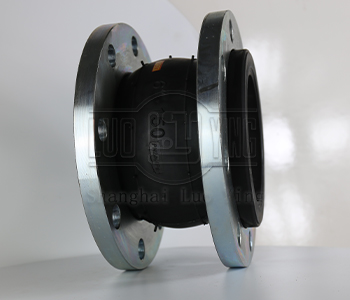The service life of a rubber flex flexible connection depends on a number of factors.
Sep-23-18
The service life of a rubber flex flexible connection depends on a number of factors.The service life of a rubber flex flexible connection, also known as a rubber expansion joint, can vary depending on several factors. In this article, we will explore these factors and their impact on the longevity of a rubber flex flexible connection.
Quality of the Rubber: The quality of the rubber used in the flexible connection is one of the most critical factors affecting its service life. High-quality rubber that is specifically engineered for flexibility, durability, and resistance to various operating conditions will generally have a longer lifespan. It is essential to choose a rubber flex flexible connection from a reputable manufacturer known for producing high-quality products.
Operating Conditions: The operating conditions play a significant role in determining the service life of a rubber flex flexible connection. Factors such as pressure, temperature, fluid media, and movement frequency can impact its longevity. Excessive pressure or temperature fluctuations, exposure to corrosive fluids, or abrasive environments can accelerate the degradation of the rubber. It is crucial to select a rubber flex flexible connection that is suitable for the specific operating conditions to ensure optimal performance and longevity.
Installation and Design: Proper installation and design are crucial for ensuring the long service life of a rubber flex flexible connection. The connection should be installed correctly with proper alignment and support to avoid undue stress on the rubber. It is important to follow the manufacturer's installation guidelines and specifications to prevent premature failure. Additionally, the design of the system and the use of appropriate anchors, guiding devices, and proper piping alignment can also contribute to the longevity of the flexible connection.

Environmental Factors: Environmental factors such as exposure to UV radiation, extreme temperatures, or corrosive environments can significantly impact the service life of a rubber flex flexible connection. UV radiation can cause the rubber to age and deteriorate faster, while extreme temperatures or exposure to corrosive chemicals can lead to accelerated degradation. Proper protection and insulation should be provided to prevent exposure to these adverse environmental conditions.
Considering all these factors, it is challenging to provide an exact service life for a rubber flex flexible connection. However, with proper selection, installation, maintenance, and adherence to operating guidelines, a well-maintained rubber flex flexible connection can typically last for several years. In some cases, the service life may range from 5 to 20 years or even longer, depending on the specific operating conditions and maintenance practices.
In conclusion, the service life of a rubber flex flexible connection depends on the quality of the rubber, operating conditions, installation and design, maintenance practices, and environmental factors. By selecting a high-quality product, following proper installation procedures, conducting regular inspections and maintenance, and protecting the connection from adverse environmental conditions, the longevity of the rubber flex flexible connection can be maximized, ensuring optimal performance and reliability in the system.

